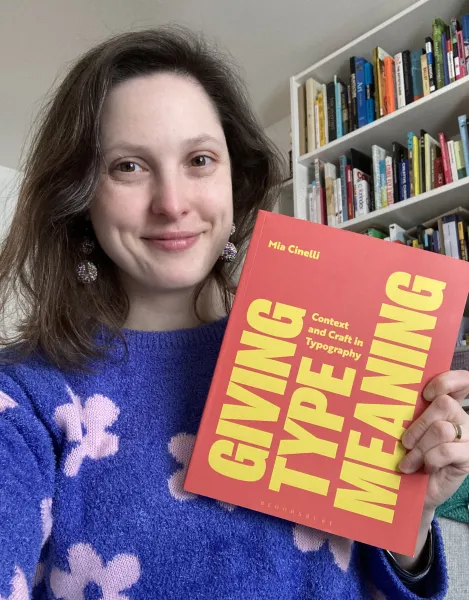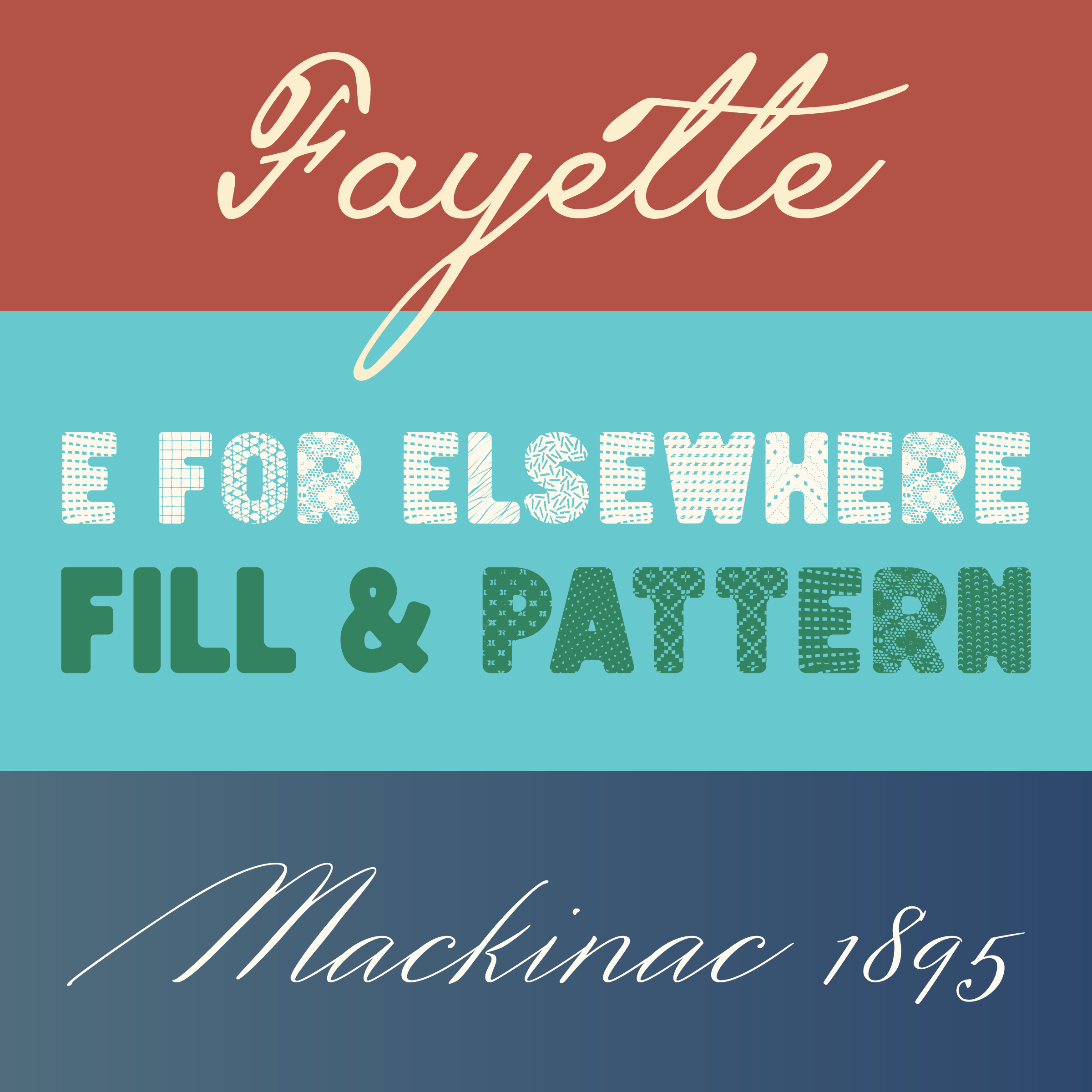NMU alumna Mia Cinelli recently published her first book, Giving Type Meaning: Context and Craft in Typography. As an associate professor in the School of Art and Visual Studies at the University of Kentucky, she engages with textbooks and resources surrounding the subjects of type and design. But she could not find a book that focused on the layers of meaning behind typography and answered her own question: “When we look at typefaces— when we look at words in the world and what they look like—how do we understand what they mean?” So she wrote her own.
The 224-page book is rooted in establishing and explaining contextual meaning in typography, through categories of social, spatial and temporal context. To achieve this, Cinelli incorporated more than 250 color images from historic and contemporary sources, as well as a range of projects—from crocheted and sculptural letterforms to pieces in corporate environments and galleries—to represent the “expanded field of art and design.”
Although Giving Type Meaning lends itself to an academic audience of students, educators and artists in design, Cinelli contends that anyone looking to engage more deeply with the type that they encounter on a daily basis will benefit from reading her book.
Recounting her days as a Northern student studying graphic communication at the School of Art and Design, Cinelli reflects on her persistent interest in type and visual communication that fully came to fruition when she was given access to the language, knowledge and terminology surrounding these subjects. Studying at Northern, something Cinelli regards as a “great privilege,” helped the artist realize the possibilities of the art world.
“I feel so lucky that I was able to study art and design in a beautiful place with brilliant and helpful people,” she said.
After graduating, Cinelli involved herself with various artistic endeavors, including the creation of three ‘place-based' digital typefaces: “Fayette” (2012), “Mackinac 1895” (2020), and “E for Elsewhere” (2021). Each of these typefaces draws inspiration from the representations of specific places, including the Upper Peninsula, and “how visual communication works with those particular kinds of places.”
“Fayette” is based on archived handwriting belonging to an unknown record-keeper who lived in the former mining town of Fayette, located in the U.P.'s Garden Peninsula. The digital typeface commemorates Fayette's economic and industrial mining boom and fall before the turn of the twentieth century, immortalizing a historic ghost town and its past residents.
Cinelli's subsequent typeface, “Mackinac 1895,” was also created in reverence of historic handwriting located within Mackinac Island's historic archive, and was created following Cinelli's artist residency on the island. “E for Elsewhere” was designed during another artist residency in Greensboro, N.C. at the Elsewhere Living Museum, and was inspired by plastic fridge magnets and vintage textiles found on-site. Cinelli's aim in creating these digital typefaces was to “speak to a specific time and place,” giving certain places “a typeface, something that visually represents that particular essence.”
Cinelli's current and upcoming projects bolster her status as an educator: “you have to be designing in order to teach design... sometimes I make soft sculptures, sometimes I make site-specific typefaces, sometimes I make speculative letterforms, sometimes I'm working on client work... I'm absolutely always making things outside of class.”
Balancing the preparation of multidisciplinary artists in the program with personal work, Cinelli is fulfilled by preparing her students for their professional lives and aiding in their self-expression, and models being a working artist for her students with her multidisciplinary work in art and design.
On the horizon, she has three solo exhibitions scheduled for 2024 in Kentucky, Pennsylvania and Florida, as well as an artist residency in upstate New York with the possibility of another site-specific typeface based in this area.
Her book, Giving Type Meaning, was published through Bloomsbury Publishing in the United Kingdom.


